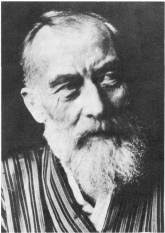
恙虫は刺されたら命を奪われる伝染病として長年恐れられたきたのである。日本の東北の特定地域でその生息は確認され、虫の祟りを祓うような伝統的祭事や祠がある。有名なのが出羽三山の松礼祭。大晦日から年明けにかけて行われる。
『死の虫』の著者、小林照幸氏は薬科大学を卒業したノンフィクション作家だ。1968年生まれ。医学について専門知識を持ちながら一般人にも理会しやすい文章を書く。と言っても医学関連の専門的議論は読み飛ばした。
本の扉を開けて一気に取り込まれたのは、日本の、というより世界で初のtsutsuga-mushi研究に着手したのは日本に30年以上滞在したドイツ人医師のErwin von Bälzであったことだ。Bälzは、100年以上前だが日本の皇室がマレイ系、即ちオーストロネシア語族との仮説を立てている。
さて彼が1879年ドイツ語で論文を発表した意味は大きい。実際は1878年にBälzと調査したスコットランド人Theobald Adrian PalmがEdinburgh Medical Journalに寄稿している。
さらにドイツ帰りの北里柴三郎がTsutsuga-mushiの研究に従事する。この背景が興味深い。日本の学会の徒弟制度は今に始まったことではない。学問上の中立は罪である。師匠に楯突いてはいけないのだ。北里は脚気の原因を発表した緒方正規の説を否定した。それで東大に入れず、福沢諭吉の支援で「私立伝染病研究所」を設立。私人の身となった北里は新潟県からのTsutsuga-mushiの調査依頼を受けることになったのだ。
Bälzと北里という医学の泰斗二人が挑戦して結論が出なかったTsutsuga-mushi研究だからこそ、日本の医学が心血を注ぐ結果となったのかもしれない。
さらに大東亜戦争がTsutsuga-mushi研究を国際的な研究に押し上げる。これは次回。
・・・
Tsutsugamushi have long been feared as a contagious disease whose bite can kill. Its presence has been confirmed in certain areas in the north-east of Japan, and there are traditional festivals and shrines that seem to exorcise the insect's hauntings. One of the most famous is the Shorei Festival on the three mountains of Dewa. It takes place between New Year's Eve and the beginning of the new year.
Teruyuki Kobayashi, author of "Death Bugs", is a non-fiction writer who graduated from the Pharmaceutical University of Japan, born in 1968. He writes about medicine in a way that is easy for the general public to understand, despite his professional knowledge of the subject. That said, I skipped over the medical-related technical discussions.
What I was taken in at once when I opened the book was that it was Erwin von Bälz, a German doctor who lived in Japan for more than 30 years, who initiated the first tsutsuga-mushi research in Japan, or rather in the world.
Bälz hypothesised more than 100 years ago that the Japanese imperial family was of Malay, i.e. Austronesian origin.
Now, it is significant that he published his paper in German in 1879. In fact, in 1878, Theobald Adrian Palm, a Scottish researcher who had worked with Bälz, contributed an article to the Edinburgh Medical Journal.
Furthermore, Shibasaburo Kitasato, who had returned from Germany, was engaged in research on Tsutsuga-mushi. This background is interesting. The apprenticeship system in Japanese academia is nothing new. Academic neutrality is a sin. You must not challenge your supervisor. Kitasato rejected the theory of Dr Ogata, who published the cause of beriberi. That is why he was not admitted to the University of Tokyo and founded the Private Institute of Infectious Diseases with the support of Fukuzawa Yukichi. As a private citizen, Kitasato was asked by Niigata Prefecture to investigate Tsutsuga-mushi.
The Tsutsuga-mushi research that Bälz and Kitasato, two of Japan's leading experts in medicine, had attempted but failed to reach a conclusion may be the reason why Japanese medicine devoted so much effort to it.
Furthermore, the Greater East Asia War pushed Tsutsuga-mushi research into international research. This will be in the next entry.


Erwin von Bälz Shibasaburo Kitasato